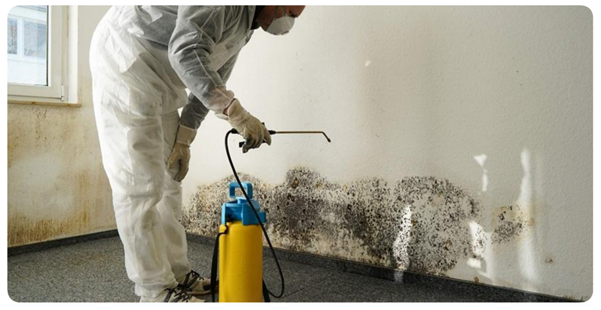What You Need to Know Before Installing Carpet Tiles in Your Home
What You Need to Know Before Installing Carpet Tiles in Your Home
Carpet tiles have become a popular choice for homeowners looking to add comfort and style to their living spaces. Unlike traditional carpet rolls, carpet tiles are versatile, easy to install, and offer a variety of design options. However, before you start your carpet tile installation project, there are several important factors to consider. In this guide, we’ll explore everything you need to know to make an informed decision and ensure a successful installation.
Understanding Carpet Tiles
What Are Carpet Tiles?
Carpet tiles, also known as carpet squares, are small sections of carpet that come in square or rectangular shapes. These tiles are designed to fit together seamlessly, creating a continuous carpeted surface. They are available in various sizes, textures, colors, and patterns, allowing for endless design possibilities. Carpet tiles are often used in commercial settings but have become increasingly popular in residential homes due to their ease of installation and maintenance.
Advantages of Carpet Tiles
1. Easy Installation:
One of the biggest advantages of carpet tiles is their ease of installation. You can install them yourself without the need for professional help, saving both time and money. The tiles come with adhesive backing or can be easily glued down, making the process straightforward.
2. Versatility:
Carpet tiles offer a wide range of design options. You can mix and match different colors and patterns to create unique designs that suit your style. This versatility allows you to create customized looks for different rooms in your home.
3. Durability:
Carpet tiles are known for their durability and can withstand heavy foot traffic. They are often used in high-traffic areas like hallways, offices, and playrooms. If a tile gets damaged, it can be easily replaced without having to replace the entire carpet.
4. Easy Maintenance:
Cleaning carpet tiles is simple and convenient. If a tile becomes stained or soiled, you can remove it, clean it, and reinstall it. For tough stains, you can replace the affected tile with a new one.
5. Cost-Effective:
Carpet tiles can be more cost-effective than traditional carpets, especially if you install them yourself. They are available in various price ranges, allowing you to find options that fit your budget.
Disadvantages of Carpet Tiles
1. Visible Seams:
While carpet tiles are designed to fit together seamlessly, the seams may still be visible, especially if the tiles are not installed perfectly. This can affect the overall aesthetic of the flooring.
2. Limited Padding:
Carpet tiles may not offer the same level of padding as traditional carpets. If you desire a softer feel underfoot, consider adding an underlay or choosing tiles with built-in padding.
3. Design Limitations:
While carpet tiles offer design versatility, there may be some limitations in terms of patterns and colors compared to traditional carpets. It’s essential to explore different options to find the right design for your home.
Preparing for Installation
Assessing Your Space
Before you start installing carpet tiles, it’s crucial to assess the space where you plan to lay them. Consider the following factors:
1. Room Size:
Measure the dimensions of the room to determine how many carpet tiles you’ll need. Carpet tiles are typically sold in boxes, so knowing the room’s size will help you calculate the number of boxes required.
2. Subfloor Condition:
Examine the condition of the subfloor. Carpet tiles can be installed on various surfaces, including concrete, plywood, and existing flooring. Ensure the subfloor is clean, dry, and level for the best results.
3. Room Usage:
Consider how the room will be used. High-traffic areas may require more durable tiles, while low-traffic rooms can benefit from softer, more luxurious options.
4. Lighting:
Evaluate the lighting in the room. The lighting can affect how the color and pattern of the carpet tiles appear. Test samples under different lighting conditions to ensure the desired effect.
NOTE:- Transform your home with Carpet Tiles in Dubai and experience the perfect blend of style, comfort, and durability. Explore our wide range of designs and elevate your living space today! Contact us now for a free consultation and find the perfect carpet tiles for your home.
Choosing the Right Carpet Tiles
Selecting the right carpet tiles is essential for achieving the look and functionality you desire. Consider the following factors when making your choice:
1. Material:
Carpet tiles are available in various materials, including nylon, polyester, and wool. Nylon is known for its durability and stain resistance, while polyester offers softness and vibrant colors. Wool is a natural and luxurious option, but it may be more expensive.
2. Texture:
Consider the texture of the carpet tiles. Options include loop pile, cut pile, and textured patterns. Loop pile is durable and suitable for high-traffic areas, while cut pile offers a plush feel ideal for bedrooms and living rooms.
3. Color and Pattern:
Choose colors and patterns that complement your interior decor. Neutral colors can create a timeless look, while bold patterns add visual interest and personality to the space.
4. Tile Size:
Carpet tiles come in various sizes, such as 18×18 inches, 24×24 inches, and larger. The size you choose will depend on your design preferences and the dimensions of the room.
5. Environmental Impact:
If environmental sustainability is important to you, look for carpet tiles made from recycled materials or those with low VOC (volatile organic compounds) emissions.
Installing Carpet Tiles
Tools and Materials Needed
Before you begin the installation process, gather the necessary tools and materials:
- Carpet tiles
- Measuring tape
- Utility knife
- Chalk line
- Adhesive (if not using peel-and-stick tiles)
- Carpet roller
- Straightedge or ruler
- Cleaning supplies
Step-by-Step Installation Guide
Follow these steps to install carpet tiles successfully:
1. Prepare the Subfloor:
Ensure the subfloor is clean, dry, and free of debris. If there are any imperfections, such as cracks or uneven surfaces, address them before proceeding.
2. Plan the Layout:
Plan the layout of the carpet tiles by starting from the center of the room and working outward. Use a chalk line to mark the center point and create reference lines for alignment.
3. Begin Installation:
Start installing the tiles from the center of the room, following the reference lines. Lay each tile in place and press it firmly onto the subfloor. For adhesive-backed tiles, remove the protective backing and press the tile down.
4. Cut Tiles for Edges:
When you reach the edges of the room, you’ll need to cut the tiles to fit. Use a utility knife and straightedge to make precise cuts. Ensure the cut tiles fit snugly against the walls.
5. Secure the Tiles:
Once all the tiles are in place, use a carpet roller to ensure they adhere properly to the subfloor. This step is crucial for achieving a smooth and even surface.
6. Final Touches:
Inspect the installation for any gaps or misaligned tiles. Make necessary adjustments and replace any damaged tiles if needed.
Maintaining Carpet Tiles
Cleaning and Care Tips
Proper maintenance will extend the life of your carpet tiles and keep them looking fresh. Follow these cleaning and care tips:
1. Regular Vacuuming:
Vacuum the carpet tiles regularly to remove dirt and debris. Use a vacuum cleaner with a rotating brush or beater bar for effective cleaning.
2. Spot Cleaning:
For spills and stains, address them promptly by blotting the affected area with a clean cloth. Use a mild detergent and water solution for spot cleaning. Avoid using harsh chemicals that could damage the carpet fibers.
3. Deep Cleaning:
Periodically deep clean the carpet tiles to remove embedded dirt and allergens. You can use a carpet cleaning machine or hire professional cleaning services for a thorough clean.
4. Tile Rotation:
To ensure even wear, consider rotating the carpet tiles periodically. This is especially beneficial in high-traffic areas where tiles may experience more wear and tear.
Repair and Replacement
One of the significant advantages of carpet tiles is the ease of repair and replacement. If a tile becomes damaged or stained beyond repair, follow these steps:
1. Remove the Damaged Tile:
Gently lift the damaged tile using a utility knife or flat tool. Be careful not to damage the surrounding tiles.
2. Replace with a New Tile:
Insert a new tile in the vacant space and press it firmly onto the subfloor. Ensure the new tile aligns perfectly with the existing tiles for a seamless appearance.
3. Blend the Replacement:
If the replacement tile looks different due to wear or fading, consider moving it to a less noticeable area and replacing a less visible tile in its place.
Tips for a Successful Carpet Tile Installation
Create a Design Plan
Before starting the installation, take the time to create a design plan. Consider experimenting with different layouts, patterns, and color combinations. You can use software tools or sketch out your design on paper. A well-thought-out plan will help you visualize the final result and make the installation process smoother.
Allow for Extra Tiles
When purchasing carpet tiles, it’s a good idea to buy extra tiles to account for any mistakes or future replacements. Having spare tiles on hand will ensure that you can address any unexpected issues during installation and have matching tiles for repairs down the road.
Acclimate the Tiles
Before installation, allow the carpet tiles to acclimate to the room’s temperature and humidity for at least 24 hours. This step prevents any potential expansion or contraction after installation.
Use a Quality Adhesive
If you’re not using peel-and-stick tiles, invest in a high-quality adhesive suitable for carpet tiles. A strong adhesive will ensure the tiles stay in place and provide a secure bond to the subfloor.
Common Mistakes to Avoid
Skipping Subfloor Preparation
Neglecting to prepare the subfloor properly can lead to an uneven installation and affect the overall appearance of the carpet tiles. Take the time to clean, level, and address any imperfections in the subfloor before starting the installation.
Ignoring Reference Lines
Reference lines are crucial for achieving a straight and even layout. Avoid the mistake of skipping this step, as it can lead to misaligned tiles and visible seams.
Overlooking Tile Orientation
Pay attention to the orientation of the carpet tiles, especially if they have directional patterns or textures. Incorrect orientation can disrupt the visual flow of the design.
Rushing the Installation
Installing carpet tiles requires patience and attention to detail. Rushing the process can lead to mistakes, uneven seams, and misaligned tiles. Take your time to ensure a high-quality installation.
Conclusion
Carpet tiles offer a practical and stylish flooring solution for homeowners looking to enhance their living spaces. With their easy installation, versatility, and durability, carpet tiles provide an excellent option for various rooms in your home. By understanding the benefits, preparing for installation, and following proper maintenance practices, you can enjoy beautiful and functional carpet tiles for years to come. Remember to plan carefully, choose the right tiles for your needs, and take the necessary steps to ensure a successful installation. Whether you’re updating a single room or transforming your entire home, carpet tiles offer endless possibilities for creating a comfortable and inviting environment.
For more insightful articles related to this topic, feel free to visit liveblogs.com.au



